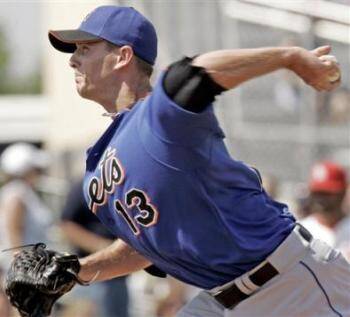By Nunzio Signore (BA, CSCS, CPT, NASM, PES, FMS)

Every time you throw, depending on genetics, you’ll either get tighter or looser in the shoulder. We really need to pump this into, not only our player’s minds, but our parents and coaches as well. Bottom line is that every arm is different when it comes to what to do, training and post throwing-wise, to a pitcher’s arm.
Many coaches (and trainers) seem to miss the boat by training everyone with the same methods and programs.
When a player walks into our facility to begin a training program the first thing we do is assess them. Athletes will fall into one of two categories from a mobility/stability standpoint:
- Loose (Laxity)
- Tight
This is a crucial anatomical map to let us know how to get the athlete from point A to point B as effectively and safely as possible. Let’s go over what these two categories mean and go over the do’s and don’ts of training each.
Loose (Laxity) – If you’re a guy who’s got a lot of laxity to begin with you’ll get looser.
These individuals need drills that focus on rhythmic and positional stabilizations to teach your nervous system to fire the cuff musculature quicker which in turn will create “good” stiffness in the glenohumeral joint (shoulder). As for pre- and post-throwing stretches run the other way. Try these drills instead ….
(Band Distractions)
(Wall Dribbles)
Tight – If you’re a naturally “tight” individual, you’ll get tighter.
These guys respond better from a training standpoint to mild stretching and mobility drills. Unlike their loose-jointed comrades, stretching correctly after a throwing session will do wonders as well as help maintain much needed Internal Rotation (IR) which can decline as much as 10 degrees after one throwing session.
(T-spine w/Int-Ext Rotation)
(Side Lying Cross Body Stretch)
As different as the two (loose vs. tight) are, there are some universal “do’s and don’ts” such as:
Do’s:
Breathing Drills and Soft Tissue Work – Getting the ribs down and breathing fully into the diaphragm helps create more space in the anterior (front) part of the shoulder helping throwers to lay back more efficiently.
(90/90 Hip Lift)
Soft tissue work is great for both individuals because it can give us added length to the muscle without the stress of “torque-ing” at the joint involved in stretching.
(Soft Tissue Work-Pec Minor)
Don’ts:
Post-Throwing Band Work – After a game or throwing session, the nervous system is a bit shot. The shoulder and cuff musculature are too fatigued to perform band drills adequately and with correct form. Save band drills for pre-throwing and the gym and even there keep the volume low (2 sets of 10 reps maximum).
Summary – Post-Throwing:
If You’re Loose – Do nothing (maybe put on an arm sleeve) and leave your band activations and rhythmic stabilizations for the next day at the gym.
If You’re a Tight Guy – Get right to your mobility/stretching work. In regards to “doing it later”, time is money.
Middle-of-the-Road – These guys are a little bit of both and can benefit from working on both stability and mobility. Input from the pitcher as to what feels the best (or not) is always best with these guys.
To sum it up, without knowing where you stand in terms of tightness or laxity, a pitcher’s mechanics and success on the mound will, sooner or later, reflect his physical constraints.
See ya’ in the gym.

